Volume 26 · Number 1 · Fall 2008
100 Ways
that UC Davis Has Transformed the World
Environment

Pollution.
We know more about the health risks of the air we breathe, thanks to UC Davis studies on secondhand cigarette smoke and children, pollution from traffic and agriculture, and the Sept. 11 dust that coated Manhattan around Ground Zero. And vet school researchers in the 1970s developed tools used by the U.S. Environmental Protection Agency to set national air-quality standards.
Oiled wildlife.
When an oil spill spreads over the surface of the ocean endangering birds and other small mammals, rescuers spring into action, thanks to a formidable network led by UC Davis wildlife veterinarians in conjunction with the California Department of Fish and Game. Injured animals are cleaned and rehabilitated at a dozen facilities stretching along the entire 1,100 miles of California’s coast.
Bike lanes.
Riding bicycles on the street used to be a much riskier activity in the days before bike lanes. In 1966, the community of Davis became a spokes model of sorts by creating the nation’s first designated bikeways. Behind the idea, design and testing were UC Davis faculty and administrators.
Rescuing Mono Lake.
Students, faculty and alumni played pivotal roles in the campaign to save Mono Lake in the eastern Sierra, ranging from sounding the first alarms to drafting the final order to restore the lake’s water supply.
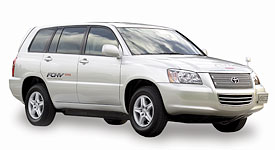
Transportation leadership.
UC Davis is a pioneer in plug-in hybrid electric cars. Researchers, particularly engineering professor Andrew Frank, have developed plug-in hybrids that recharge from a standard 110-volt electric outlet and can travel as far as 20 miles on batteries alone — or get 100 miles per gallon of gas. In addition, the UC Davis Institute of Transportation Studies, under the direction of Daniel Sperling, studies all types of alternative-fuel vehicles — from hybrids to hydrogen-powered — and shapes public policy on transportation issues ranging from new auto technology and emission reductions to consumer attitudes and studies.
Fuel standards.
The fuel you pump into your car or truck will be getting greener, thanks in part to the work of UC Davis professors. In January 2007, Gov. Arnold Schwarzenegger announced the world’s first low-carbon fuel standard for transportation fuels. It requires gasoline and diesel-fuel providers to reduce the carbon intensity of their products sold in California by 10 percent by year 2020 and more thereafter. Three UC Davis professors helped write this groundbreaking standard. In California, transportation fuels account for about 40 percent of all greenhouse-gas emissions.
Smart lighting.
Energy-saving lighting has been developed by the California Lighting Technology Center at UC Davis, one of the few design research centers in the nation doing such work. Its experts advance the use of light-emitting diodes (LEDs) in lamps, occupancy sensors in homes and parking garages, and daylighting in residential and business buildings.
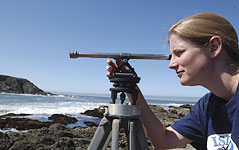
Plumbing the ocean.
A captive-rearing program for winter-run Chinook salmon has helped keep the species alive. That is one of the achievements of UC Davis’ Bodega Marine Laboratory, which performs crucial studies of ocean ecosystem problems, including abalone losses, the “ecosystem services” of sea grasses, marine upwelling and coastal climate change.
Endangered fish.
Led by California native fish authority Peter Moyle, studies of disappearing salmon, delta smelt and sturgeon have brought new protection to watersheds.
DDT warning.
In the 1960s wildlife biologist Daniel Anderson was one of the first scientists to recognize how pesticides like DDT were linked to eggshell thinning and population declines in pelicans and cormorants. His work as a UC Davis faculty member from the 1970s to the present has continued to add to the understanding of environmental and human impacts on seabird populations — research that has been instrumental in the creation of ecological reserves in California and Baja California.
State water project.
Engineering work at UC Davis played a big part in the design of the 444-mile-long California Aqueduct and other elements of the State Water Project that today serves 23 million Californians and 755,000 acres of farmland. Jaime Amorocho and others built water project models in a laboratory that now bears his name and that is used today by scientists designing river pumps and other diversion works that are safer for fish like the endangered delta smelt.

Sustainable agriculture.
Many once-controversial ideas about sustainable farming are now mainstream thanks to decades of research and education by such UC Davis-based programs as Sustainable Agriculture Farming Systems and the UC Sustainable Agriculture Research and Education Program. They have studied fertilizer use, pest control, soil health and water conservation, and shared those findings with growers interested in agriculture that stewards resources wisely and avoids negative social impacts while keeping farms fiscally sound.
Saving Sierra forests.
UC Davis research in California forests helped shift public policy from encouraging commodity extraction to protecting natural resources. In particular, at the request of Congress in 1992, the Sierra Nevada Ecosystem Project assessed the ecological, economic and social value of this mighty Western mountain range. It was the first study to consider humans as part of an ecological system on such a large scale.
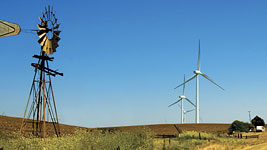
Wind power.
UC Davis engineers have developed software for modeling airflow that allows improved turbine design, while the California Wind Energy Consortium at UC Davis brings together industry, academia and government to advance the use of wind power. The center carries out research, organizes conferences and offers training courses on wind energy systems for technicians and the general public.

Environmental cleanup.
Faculty members’ novel methods for tracking the movement of chemicals in water, soil and air have been adopted worldwide. In 1961, UC Davis established the nation’s first environmental toxicology department outside of a medical school. Zoologist Robert Rudd’s book Pesticides and the Living Landscape was hailed as “the scientist’s Silent Spring.” And recent highlights include the cleanup of more than 10 tons of lost fishing gear to make the coastal ocean safer for wildlife.

Lake Tahoe.
UC Davis researchers are helping keep Lake Tahoe blue. Starting almost 50 years ago under the leadership of Charles Goldman, they were the first to warn that the lake ecosystem was in trouble and have led the search for solutions. Today two new UC Davis interpretive centers at the lake spread research findings to the general public and decision-makers.
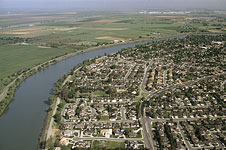
Levee dangers.
Disaster may be averted in the Sacramento-San Joaquin Delta in the future thanks to science-based advice by UC Davis experts. Warning that the state’s fragile system of levees is susceptible to floods and earthquakes that could affect the supply of water, food, energy and transportation for most people living in California, UC Davis experts haven’t shied away from proposing even controversial solutions.
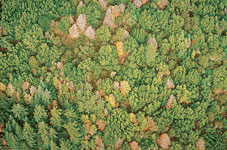
Oak death.
UC Davis plant pathologist Dave Rizzo and a colleague discovered what has killed millions of oak trees in California, and they are now trying to figure out how to fully control it. The effort took on new urgency this summer when wildfires tore through California, including at Big Sur, where sudden oak death has left so much deadwood that the fires there likely burned hotter and with more intensity.
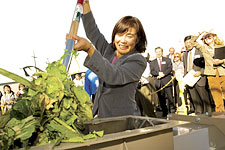
From trash to gas.
One day food waste and yard trimmings may power our homes. The Biogas Energy Project is using silos of hungry bacteria to turn waste into methane and hydrogen, with the goal of producing enough energy from one ton of waste to fuel 10 California homes for one day.
Climate change.
For decades, UC Davis has been anticipating climate change and its impacts on agriculture, native plants and animals, and human health. Researchers here pioneered the now-ubiquitous use of stable isotopes in understanding global carbon and nitrogen cycles.
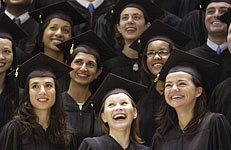
A world of alumni.
From the time the first students graduated in 1911, UC Davis alumni have been making their mark in the world — and beyond. Among their countless achievements are winning Olympic gold medals, directing Oscar-winning Disney films, heading UNICEF and flying through space as astronauts. With every year, the Aggie impact multiplies. From nine students in the 1911 class, our living alumni total has grown to 185,000.
« Return to 100 ways introduction

